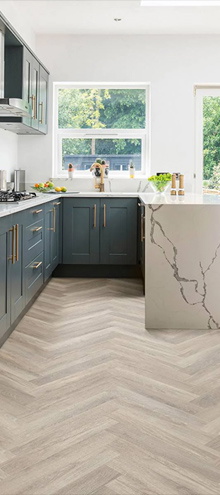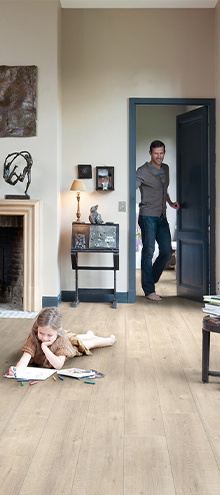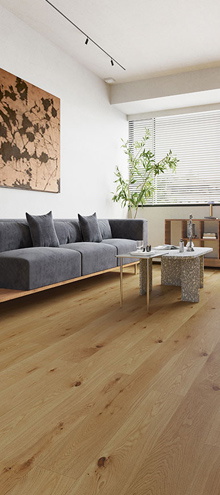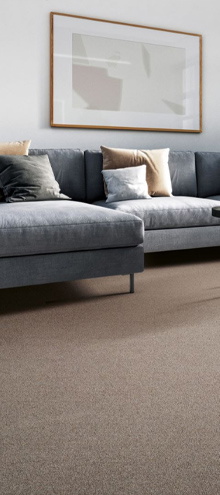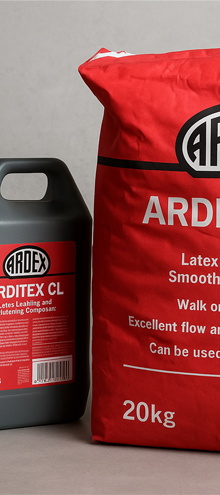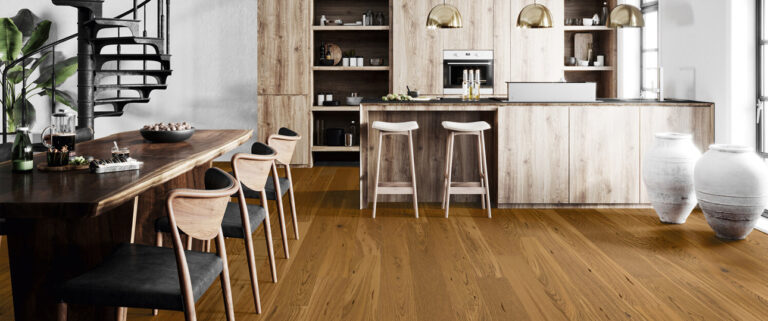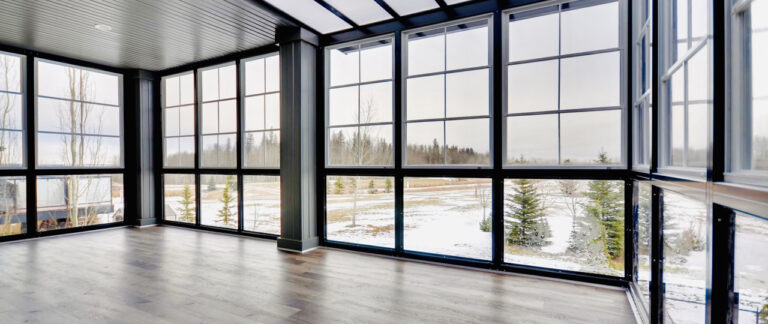It doesn’t matter if you’re relaying your bathroom floor to be waterproof or overhauling your hallway and lounge space for a more comfortable surface underfoot, there are many different alternative flooring choices out there for you to pick from!
But while many of these options can be laid in the same space, some are certainly better suited for long-term use around your home than others, such as engineered wood and luxury vinyl tile flooring.
Both aesthetically pleasing and highly durable, choosing between LVT vs engineered wood can seem like a tricky prospect, which is why we’ve pulled together this guide breaking down the pros and cons of each material to help make your choice easier!
From their longevity and cost to their maintenance needs, room suitability, and more, we’ve covered everything you need to know, below.
What is LVT?
An upgraded and more luxurious version of traditional vinyl flooring, LVT (or luxury vinyl tiling) is comprised of multiple vinyl and PVC layers compressed together to form a flexible yet hard-wearing surface that can be styled in various designs thanks to its unique construction.
Specifically, LVT is made using a photographic layer within each tile. This high-res image is typically a wood or natural stone image, which is then protected by a durable wear layer that prevents damage – leaving you with a stunning floor that costs far less than real wood or stone.
What is engineered wood?
Unlike the photographic layer in LVT that simply mimics a certain material, engineered wood is actually contains wood. The core of each tile, or plank, is usually made of plywood or high-density fibreboard (HDF), which is then topped with a solid hardwood veneer protected by a wear layer.
This means that, rather than copying the look of wood planks, engineered wood is made using the real thing, giving you both enhanced stability underfoot and a realistic wooden floor that is just as durable as a traditional wooden board setup.
LVT vs engineered wood: How do they compare?
As you can see, the base construction of LVT and engineered wood planks is very different. However, while the materials used in their construction are unique, they’re far more similar to one another in their qualities than first meets the eye:
Waterproofing
To start with, let’s touch on one of the essential factors that all types of flooring need to bear in mind – water resistance and waterproofing. After all, if you’re laying a new floor in your kitchen, bathroom, or utility space, a waterproof floor is basically a must!
And here, LVT certainly takes the edge. Thanks to its use of PVC and vinyl, the vast majority of LVT is fully waterproof, making it the ideal floor of choice for high-moisture areas like bathrooms.
However, although not waterproof, engineered wood is at least water-resistant, meaning it’s still suitable for use in your kitchen, as well as plenty of other rooms around the home where water is not present but the occasional spill may occur.
Durability
Next up – durability – and here things are much closer for both materials, as LVT and engineered wood are defined by their excellent level of longevity and general resistance to wear and tear.
In fact, not only are LVT and engineered wood floors scratch, dent, and stain-resistant, but many high-end products have warranties that can last you for 15 years or more if you look after your floor properly!
However, with all that being said, it can be argued that engineered wood has a very slight advantage over LVT in this area, as you can refurbish engineered wood planks if they’re damaged, while LVT tiles are more likely to need replacing in their entirety if damaged.
Maintenance
Similarly to durability, LVT and engineered wood are on even footing when it comes to maintenance. Manufactured to have solid wear layers, floors like these need little more than a sweep, hoover, and the occasional mop to keep things clean, making both floor types a great low-maintenance choice.
Installation
Nowadays, modern flooring has made it easier than ever for homeowners to lay down their own floors personally, rather than having to pay a professional floorer to do the installation for them. Indeed, this is in large part due to the invention of click and groove installation systems, both of which are used in the design of LVT and engineered wood.
Systems like these are made to be DIY-friendly, allowing you to install LVT floors or lay engineered wood planks with minimal experience, so really, your choice here will come down to personal preference.
Cost and value
Likely one of the first things you’ll consider when buying any floor for your home, knowing the rough cost of the type of floor you hope to install is essential for setting yourself a feasible budget to work with.
And here, LVT is once again the clear winner. More affordable overall and with a lower upfront cost compared to engineered wood, LVT provides fantastic value for money and makes for a perfect budget-conscious choice.
Still, if your budget is a little larger, then engineered wood may add more value to your home in the long run. For one thing, many homeowners love the look of a wood floor, and the warranty of engineered wood is often longer than that of LVT, making this sort of floor an excellent long-term investment.
Insulation and comfort
As important as it is to consider the price and maintenance requirements of your new floor, it’s a pretty moot point if your floor is cold and uncomfortable to walk on, especially on those cold winter mornings.
Fortunately, thanks to their various layered systems and hardy nature, both LVT and engineered wood can be installed over underfloor heating systems to enhance warmth and comfort.
Not only that, but LVT has solid noise-dampening effects to keep footfall echoes to a minimum, while engineered wood floors tend to feel warmer and more natural underfoot compared to LVT, being better able to retain heat after you switch your heating system off.
Room suitability
As we mentioned right at the start of our article, LVT and engineered wood are sound flooring choices for all manner of rooms in the home. However, LVT once again has more to offer in this area compared to engineered wood due to its waterproof nature.
The Room Compatibility Chart
| Room Type | Engineered Wood | Luxury Vinyl Tiles |
|---|---|---|
| Bathroom |
|
|
| Bedroom |
|
|
| Kitchen |
|
|
| Dining Room |
|
|
| Living Room |
|
|
| Hallway |
|
|
Key:
Simply put, while LVT and engineered wood can be used in your kitchen, living room, and hallways without complaint, LVT is certainly the superior choice for bathrooms and utility rooms, where water is a given and excessive moisture exposure has the potential to warp and damaged engineered wood if you’re not careful.
Environmental impact
Although this might not be a major concern for all homeowners, if you’re looking for a floor that is eco-friendly and environmentally conscious, then engineered wood is definitely the material option for you.
Made entirely from real wood, engineered wood floors are fully biodegradable. LVT, on the other hand, is often made from synthetic materials that cannot be reused or broken down quickly – though this is slowly starting to change.
Styles and effects
Last, but not least, let’s quickly touch on the style and effect variations between LVT and engineered wood, and once again, LVT has more to offer here than engineered wood planks.
Given the nature of its construction, engineered wood is limited to producing planks made from, well, wood. LVT meanwhile, can be designed to copy all types of wood and natural stone, giving you far more options stylistically when it comes to replacing the floors in your home.
LVT or engineered wood: Which is better?
As you can see, when it comes to deciding between LVT and engineered wood, there’s a lot to consider. Both materials have their pros and cons and both can be used all over your home.
However, if we had to pick one material over the other, then we’d have to say that LVT takes the crown here – but only just!
At the end of the day, being cheaper and fully waterproof compared to being just water-resistant means that LVT can be used in all rooms around your house, whereas engineered wood is more expensive in general and susceptible to water damage in high-moisture content rooms.
If you want affordability and maximum flexibility, go with LVT. If, on the other hand, you’re more interested in an authentic wood appearance for your kitchen and living spaces, then engineered wood is ideal.
Start your flooring renovation journey with us
With all that covered, you should hopefully now have a much better idea of the differences between LVT vs engineered wood, and which is better suited for the needs of your home.
Of course, once you’ve settled on your flooring material of choice, you’ll need to purchase your tiles to begin your renovation – and that’s exactly where Flooring King can lend a hand!
Boasting an extensive range of high-quality engineered wood flooring and LVT tiles, as well as laminate planks and sheet vinyl, we’ve something for everyone in our range. Start browsing today to find the right tiles for you, and don’t forget to visit our flooring blog as well for more insightful pieces like this one!

